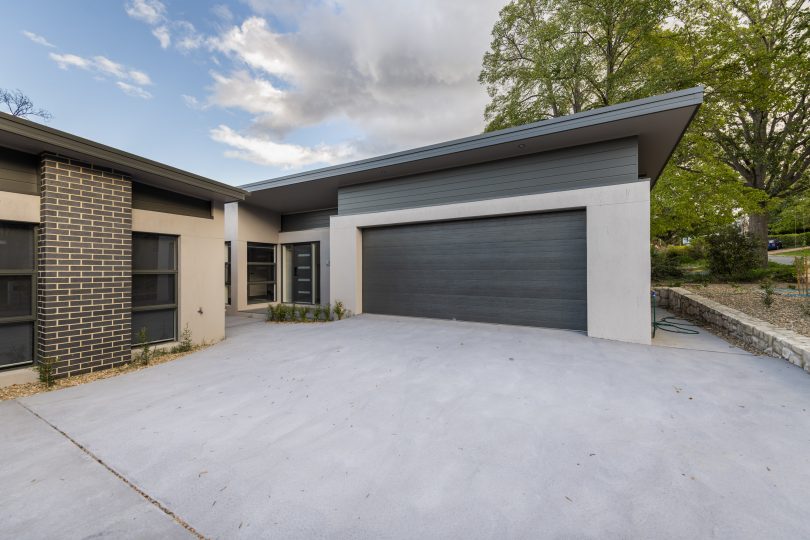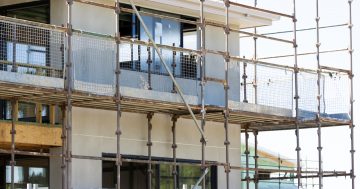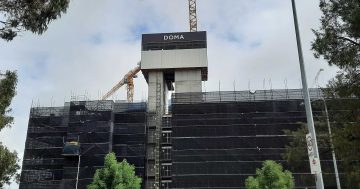
MBA ACT CEO Michael Hopkins says the government needs to be much bolder if housing targets are to be met. Photo: Region.
The building industry has doubled down on its opposition to limits on dual occupancy development and will urge the ACT Government to be bolder in its reforms if it really wants to encourage greater housing choice in the ACT.
Master Builders ACT CEO Michael Hopkins will tell a public hearing into the new Territory Plan today (7 December) that now was not the time for half-measures when it comes to planning reform to increase housing supply.
Mr Hopkins will call for the “illogical” 120sqm restriction on dual occupancy dwellings to be scrapped.
He told Region ahead of the hearing that the limit was illogical and unnecessary given the other provisions in the Territory Plan, such as the design guidelines and technical specifications.
He said these provisions already dealt with matters such as green space, setbacks, solar access and overshadowing, which resident groups were rightly concerned about.
“It’s just an artificial control for a reason that only the government can explain that makes no sense,” he said.
“It will only further limit the delivery of housing choices in the ACT.”
Mr Hopkins will also tell the hearing that the government should go further and reduce the minimum block size for new dual occupancy dwellings from 800 sqm to 600 sqm, allow dual occupancy dwellings on all corner sites, and allow three dwellings on RZ1 sites greater than 1200 sqm.
He said dual occupancies on corner sites were common in other cities and if two homes could be built on an 800 sqm block then why not three on a 1200 sqm, or even four on a 1600 sqm block?
Master Builders agreed with residents groups and community councils that were concerned about conserving what was unique about Canberra’s suburbs but that could be achieved under the Plan’s design controls and technical specifications, as well as building more diverse housing.
“It’s important to get those provisions right to preserve what the community does value about Canberra, but Canberrans also value accessing affordable and appropriate housing, and the government hasn’t been bold enough on delivering on that part of what Canberrans want in the Territory Plan,” Mr Hopkins said.

Canberra needs to build more homes in established areas and dual occupancy is a way to do that. Photo: Region.
The MBA will also call for the lease variation charge on both dual occupancy developments to be halved to encourage more development.
He said industry feedback had identified the LVC as a barrier to building more dual occupancies.
“Even a temporary reduction would allow the government to test if that is an effective lever to encouraging greater housing choice, and if it is it should become a permanent part of the tax regime,” Mr Hopkins said.
“If the controls and costs are so high that people don’t proceed with development in the first place then the government won’t receive any additional revenue.”
Mr Hopkins will also tell the hearing that the government should beef up the ACT Planning and Land Authority and National Capital Design Review Panel and reform the pre-development application process.
He said better outcomes relied on developers being able to talk through proposals, especially innovative ones, first with planning officials and experts before committing to a development application.
“It’s in everyone’s best interests because if they can get advice early on and embrace the feedback before they lodge their development applications, we’ll get better development applications,” Mr Hopkins said.
He noted securing an appointment with the National Capital Design Review Panel took over six months.
“This makes accessing expert design advice unworkable when proponents are in the early stages of designing new city-shaping projects,” he said.
Mr Hopkins said that an MBA analysis shows that between 5800 and 6380 dwellings must be built annually for the next five years to meet our share of the National Housing Accord targets.
“The ultimate success of the new planning regime will hinge on whether our housing targets are achieved, high-quality building designs are approved, and the development approval system results in more efficient planning approvals,” he said.





















